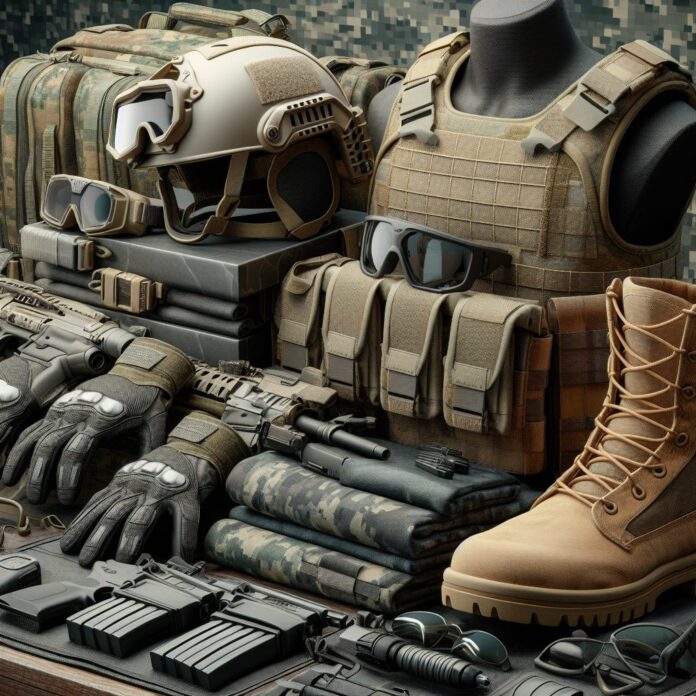In the realm of tactical operations, the meticulous effort to maintain tactical gear stands as a linchpin for operational success, requiring continuous checks, thorough cleanings, and adherence to manufacturer guidelines to uphold the reliability and functionality of essential tools and equipment.
First and foremost, let’s delve into the introduction to tactical gear. Tactical gear refers to specialized equipment designed to support military or law enforcement operations, as well as outdoor activities such as camping, hiking, and survival scenarios.
It includes items like body armor, helmets, tactical clothing, boots, backpacks, firearms, and various accessories. The durability and functionality of this gear are vital for safety, protection, and optimal performance in high-risk situations.
Understanding the importance of maintaining tactical gear is crucial. Regular maintenance ensures that the gear remains in top condition, minimizing the risk of malfunctions or failures that could jeopardize your safety or compromise your mission’s success.
Proper maintenance also extends the lifespan of your gear, saving you money in the long run by avoiding premature replacements.
By following these guidelines and investing time and effort into proper maintenance, you can ensure that your tactical gear remains in optimal condition, ready to serve you in any situation that demands its performance and reliability.
Importance of Maintaining Tactical Gear
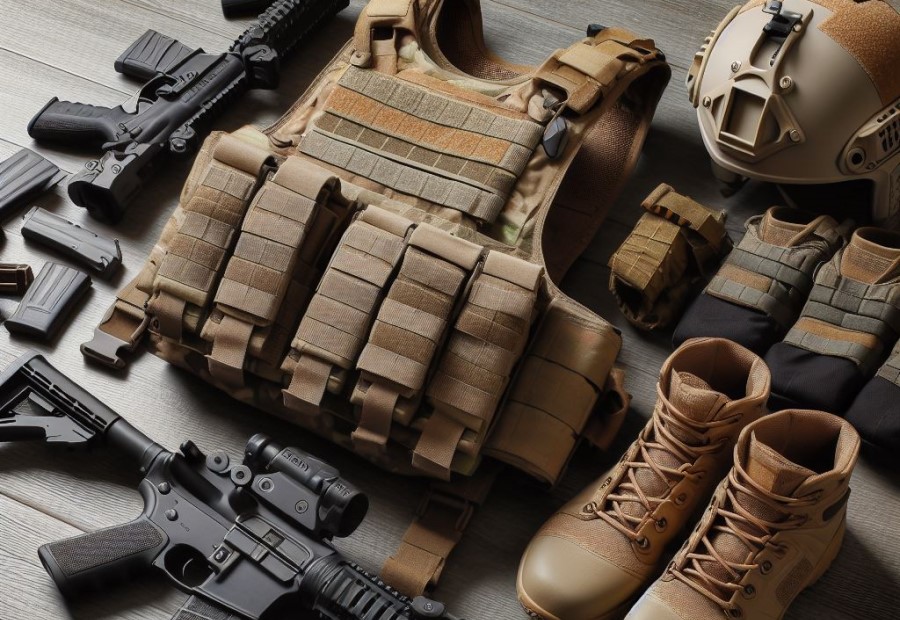
Maintaining tactical gear is of utmost importance to ensure its reliability and functionality in critical situations. The Importance of maintenance regular maintenance boosts the lifespan of the equipment and enhances its performance.
Proper care and upkeep of tactical gear also cultivate proficiency and preparedness in tactical operations. Importance of maintaining gear Neglecting maintenance can lead to malfunctions or failures when the gear is needed most.
It is crucial to inspect the gear regularly for any signs of wear, damage, or malfunction. This includes checking the straps, buckles, zippers, and stitching for any weaknesses or faults.
Cleaning and lubricating the gear, such as firearms or knives, is necessary to prevent rust and ensure smooth operation.
Additionally, Importance of Maintaining Tactical Gear storing the gear properly in a clean and dry location helps prolong its durability.
By prioritizing the maintenance of tactical gear, individuals can rely on their equipment to perform optimally and effectively contribute to their safety and success in tactical situations.
Tips Maintain Tactical Gear
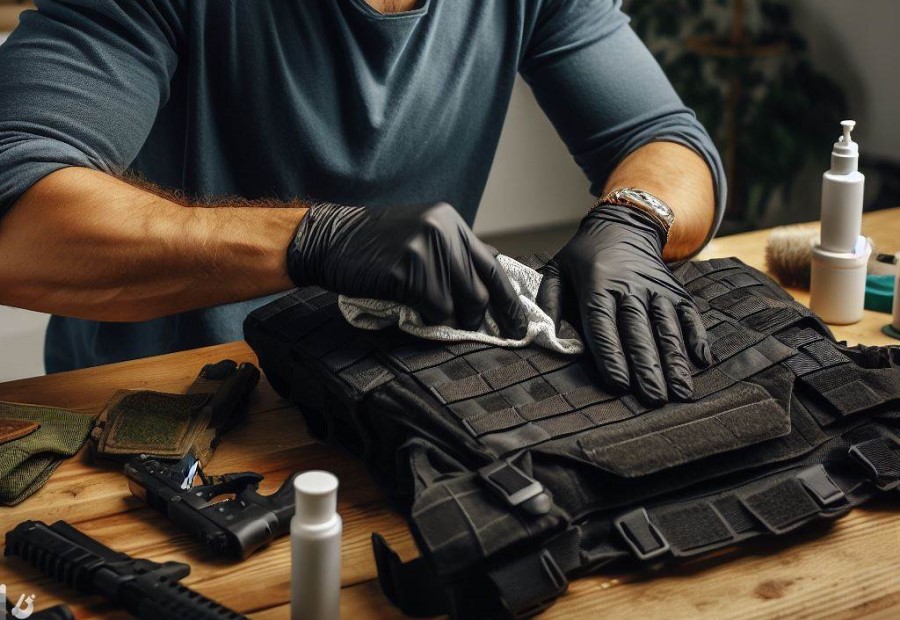
Cleaning and Inspection
Cleaning and inspection are vital components of maintaining tactical gear. Regular cleaning aids in the removal of dirt and debris that can accumulate on the gear, guaranteeing its longevity and functionality.
It is essential to thoroughly clean tactical materials, giving special attention to any dirt spots or stains that may impact the gear’s performance.
Throughout the cleaning process, it is recommended to use a mild detergent or cleaning solution specially formulated for tactical gear. Harsh chemicals should be avoided as they can cause damage to the fabric or other materials.
A gentle scrub brush can be utilized to remove stubborn dirt and stains without causing harm.
Once the cleaning is complete, conduct a comprehensive inspection of the gear. Look out for signs of wear and tear, such as loose threads or structural weaknesses.
Ensure that all straps, zippers, and fasteners are in proper working condition. This step will help identify any potential issues or areas that may require repair.
By properly maintaining the gear, expensive replacements or repairs can be avoided. It is an essential part of protecting your investment and ensuring the gear performs effectively in critical situations.
Pro-tip: To stay organized and ensure consistent care for your tactical gear, consider creating a maintenance log to keep track of your cleaning and inspection schedule.
Proper Storage
Proper storage is essential for maintaining tactical gear and ensuring its longevity and functionality. Here are some steps to follow for proper storage:
- Find a dedicated storage space: Designate a specific area, such as a storage room or closet, where you can keep your tactical gear.
- Keep it dry: Moisture can damage the materials and components of your gear. Store it in a dry place to prevent any moisture-related issues.
- Use vacuum bags: If possible, store your gear in vacuum bags to minimize its exposure to air and any potential contaminants.
- Utilize a tactical hanger: Hang your gear on a tactical hanger to prevent creases, wrinkles, and unnecessary stress on the fabric.
- Avoid excessive weight: Do not stack heavy items on top of your gear, as it can cause deformation or damage to the protective elements.
- Separate clean and dirty gear: Keep your clean and dirty gear separate to prevent any cross-contamination and maintain hygiene.
- Regularly inspect and clean: Occasionally inspect your stored gear to ensure there are no signs of damage or pests. Clean it as necessary, following the proper cleaning guidelines.
By following these storage practices, you can protect your investment in tactical gear and ensure it remains in optimal condition for its intended use.
Regular Maintenance and Repairs
Regular maintenance and repairs are essential for keeping your tactical gear in optimal working condition. Here are some steps to follow to ensure your gear stays in top shape:
- Inspect your gear regularly for any signs of wear and tear. Check for structural weaknesses, loose threads, or any damage that may compromise its functionality.
- Address any minor issues immediately. Repair loose threads or small tears before they become bigger problems that may require more extensive repairs.
- Follow manufacturer guidelines for regular maintenance and repairs. Different gear may have specific cleaning instructions or recommended intervals for maintenance. Make sure to adhere to those guidelines.
- Clean and maintain your gear regularly. Use a mild detergent or specific cleaning solutions recommended for your gear. Spot clean any dirt spots or stains using a scrub brush.
- Properly store your gear when not in use. Store it in a dry place, away from direct sunlight or extreme temperatures. Consider using vacuum bags or a tactical hanger to keep it organized and protected.
Regular maintenance and repairs are crucial to prolong your gear’s lifespan and ensure it remains in optimal working condition. Don’t neglect this important aspect of gear maintenance to avoid any unexpected issues during critical situations.
Replacing Worn-out Parts
When it comes to maintaining tactical gear, replacing worn-out parts is essential to uphold reliability, prevent malfunctions, and ensure peak performance in demanding operational scenarios.
- Routine Maintenance: Implement a systematic approach to identify and replace worn-out components in tactical gear.
- Improved Reliability: Regular replacement of worn parts enhances the overall reliability of the gear, minimizing the likelihood of malfunctions.
- Risk Mitigation: Proactively addressing worn-out parts mitigates the risk of equipment failure, especially during critical and high-stakes operations.
- Optimal Performance: Ensures that tactical gear consistently performs at its best, meeting the demands of dynamic and challenging situations.
- Enhanced Safety: By maintaining gear with fresh components, individuals contribute to a safer operational environment, reducing the chances of unforeseen issues in the field.
Tools and Supplies for Tactical Gear Maintenance
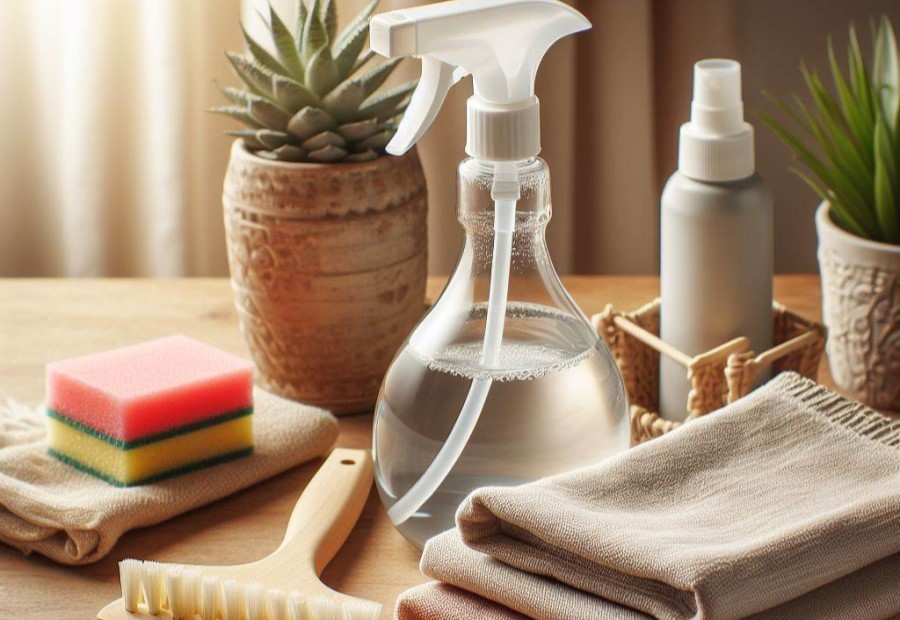
Cleaning Solutions and Lubricants
When it comes to maintaining tactical gear, using the right cleaning solutions and lubricants is essential. These cleaning solutions and lubricants not only help to remove dirt and grime but also protect the materials and ensure smooth operation.
- Mild detergent: A mild detergent mixed with water can be used to clean fabrics and nylon materials. It effectively removes stains and dirt without damaging the gear.
- Fabric treatments: Applying fabric treatments such as waterproof sprays can help to protect the gear from moisture and increase its lifespan.
Using these cleaning solutions and lubricants can greatly improve the longevity and performance of your tactical gear. Regular cleaning and maintenance are important to ensure that the gear remains in top condition, ready for any situation.
Fact: Cleaning solutions and lubricants should be used according to the manufacturer’s instructions to avoid any potential damage to the gear.
Brushes, Cloths, and Cleaning Kits
When it comes to maintaining tactical gear, having the right brushes, cloths, and cleaning kits is essential. These tools, such as brushes, cloths, and cleaning kits, help ensure that your gear stays in top condition and ready for use whenever you need it.
- Brushes: Invest in a variety of brushes specifically designed for cleaning tactical gear. These brushes, which include scrub brushes for removing stubborn dirt spots, come in different sizes and shapes to tackle different areas and materials.
- Cloths: Use soft and lint-free cloths to gently clean and wipe down your gear. Microfiber cloths, known for their effectiveness in capturing dirt and debris without leaving scratches, are a great option.
- Cleaning Kits: Look for cleaning kits that include specialized solutions and lubricants for tactical gear. These kits often contain mild detergents and fabric treatments that are safe to use on a wide range of materials.
By using the right brushes, cloths, and cleaning kits, you can effectively remove dirt, grime, and contaminants from your gear without causing any damage.
Regular cleaning and maintenance will help extend the lifespan of your gear and keep it in optimal working condition.
Replacement Parts and Tools
When it comes to maintaining tactical gear and ensuring its longevity, replacement parts and tools are essential. Here are some key factors to keep in mind:
- Importance of High-Quality Replacement Parts: It is crucial to select replacement parts of the highest quality that are compatible with your specific gear. These parts should be durable and able to withstand the demands of tactical activities.
- Diverse Range of Tools: A variety of tools is necessary for maintaining tactical gear effectively. This includes screwdrivers, pliers, wrenches, and specialized tools designed for your gear. With these tools, you can disassemble, repair, and replace components as needed.
- Ensure Proper Fit: Properly fitting replacement parts are vital to the performance and safety of your gear. Avoid using ill-fitting or loose parts that can compromise functionality. Always follow the manufacturer’s guidelines or seek expert advice for proper installation.
- Regular Inspection: Regularly inspect your gear for any signs of wear and tear. This allows you to identify parts that may require replacing and address any issues before they become more serious problems.
- Availability: It is important to ensure that the replacement parts and tools you need are readily available. Check with the gear manufacturer, authorized dealers, or reputable third-party suppliers for the availability of spare parts. Having access to necessary components when needed is crucial.
By considering these factors and having the right replacement parts and tools on hand, you can effectively maintain your tactical gear and keep it in optimal working condition.
Common Mistakes to Avoid in Tactical Gear Maintenance
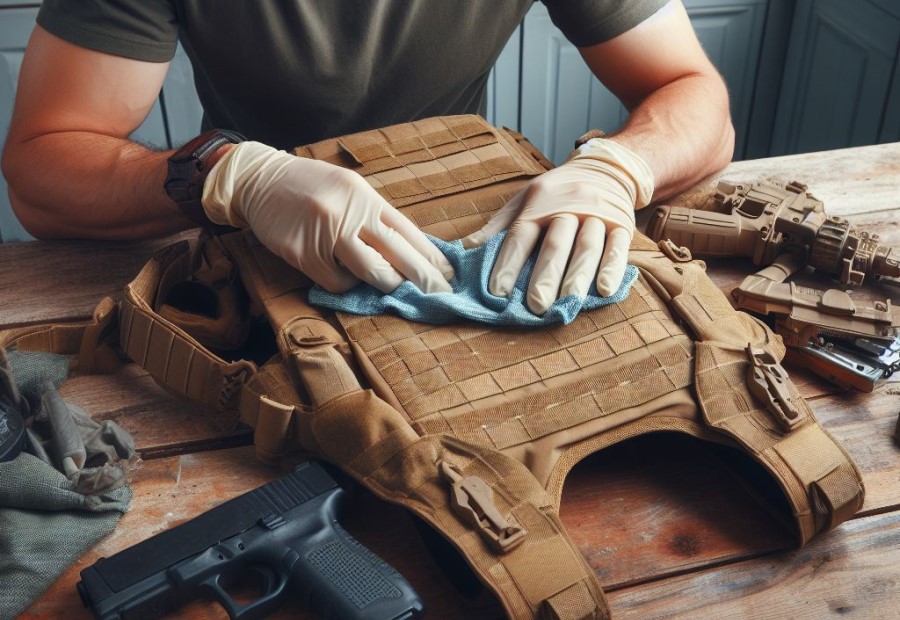
When it comes to tactical gear maintenance, avoiding common mistakes is crucial for keeping your gear in optimal condition. Here are some common mistakes to avoid in tactical gear maintenance:
- Not cleaning your gear regularly: Regular cleaning is essential to remove dirt, debris, and sweat that can accumulate on your gear.
- Using improper cleaning methods: Using harsh chemicals or abrasive materials can damage your gear. Follow the manufacturer’s instructions for cleaning and use gentle cleaning products.
- Not checking for wear and tear: Regularly inspect your gear for any signs of wear and tear, such as loose stitching or frayed straps. Address these issues promptly to prevent further damage.
- Not storing your gear properly: Improper storage can lead to damage or deformation of your gear. Store your gear in a dry and clean environment, away from direct sunlight or extreme temperatures.
- Overlooking maintenance of small parts: Pay attention to the maintenance of small parts, such as zippers, buckles, and Velcro. Cleaning and lubricating these parts regularly can prolong their lifespan.
Frequently Asked Questions
1. How do I properly clean and maintain my waterproof clothing?
To clean and maintain your waterproof clothing, follow these steps:
- Check the care instruction tags for specific cleaning instructions.
- Use cold water and mild detergent to machine wash the clothing.
- Avoid using bleach or fabric softeners as they can damage the fabric.
- Turn the clothing inside out before washing to protect fabric treatments.
- Air dry the clothing on a drying line, inside-out and in the shade.
- If necessary, reapply the waterproof layer using a wash-in or spray method.
2. How can I protect my investment in tactical gear?
To protect your investment in tactical gear, consider these tips:
- Follow the care instruction tags on each piece of gear for proper cleaning and maintenance.
- Store your gear in a cool, dry place to avoid exposure to the elements.
- Clean your gear regularly to remove dirt, debris, and salt, which can weaken the materials.
- Avoid using sharp objects near your gear to prevent rips and tears.
- Take care of waterproof gear to prevent damage from exposure to water and UV rays.
3. How should I clean and maintain my elbow pads?
To clean and maintain your elbow pads, follow these steps:
- Remove the elbow pads from your gear and hand wash them using a mixture of water and technical washing product.
- Gently scrub any dirt or stains with a soft brush or cloth.
- Rinse the elbow pads thoroughly and hang them to dry in a well-ventilated space.
- Once dry, check for any damage or excessive wear and repair or replace as necessary.
4. How can I prevent color fading on my tactical gear?
To prevent color fading on your tactical gear, consider these tips:
- Wash your gear on cold or warm settings instead of hot water.
- Turn your gear inside out when washing to protect colors and patterns.
- Avoid using harsh chemicals, bleach, or fabric softeners.
- Use washing products specifically made for technical fibers.
- Avoid high cycle rate programs and remove excess moisture before hanging to dry.
5. How can I properly store my winter jackets and other seasonal garments?
To properly store your winter jackets and other seasonal garments, follow these steps:
- Wash the garments before storing to remove bacteria and dirt.
- Remove any heavy or bulky objects from the pockets.
- Close zippers, Velcro, and buttons to prevent damage and maintain the garment shape.
- Hang or neatly fold the garments to prevent wrinkling or membrane ruptures.
- Air out the storage space periodically and refold garments when storing seasonal or mission-specific gear.
- Consider using vacuum bags for storing UF PRO winter clothing.
6. How can improper maintenance of tactical gear affect my bank account?
By neglecting basic cleaning and maintenance, you risk reducing the lifespan of your gear and may have to replace it more frequently, costing you a small fortune in the long run.
Taking care of your gear from the beginning is less expensive and less stressful than constantly replacing it.

